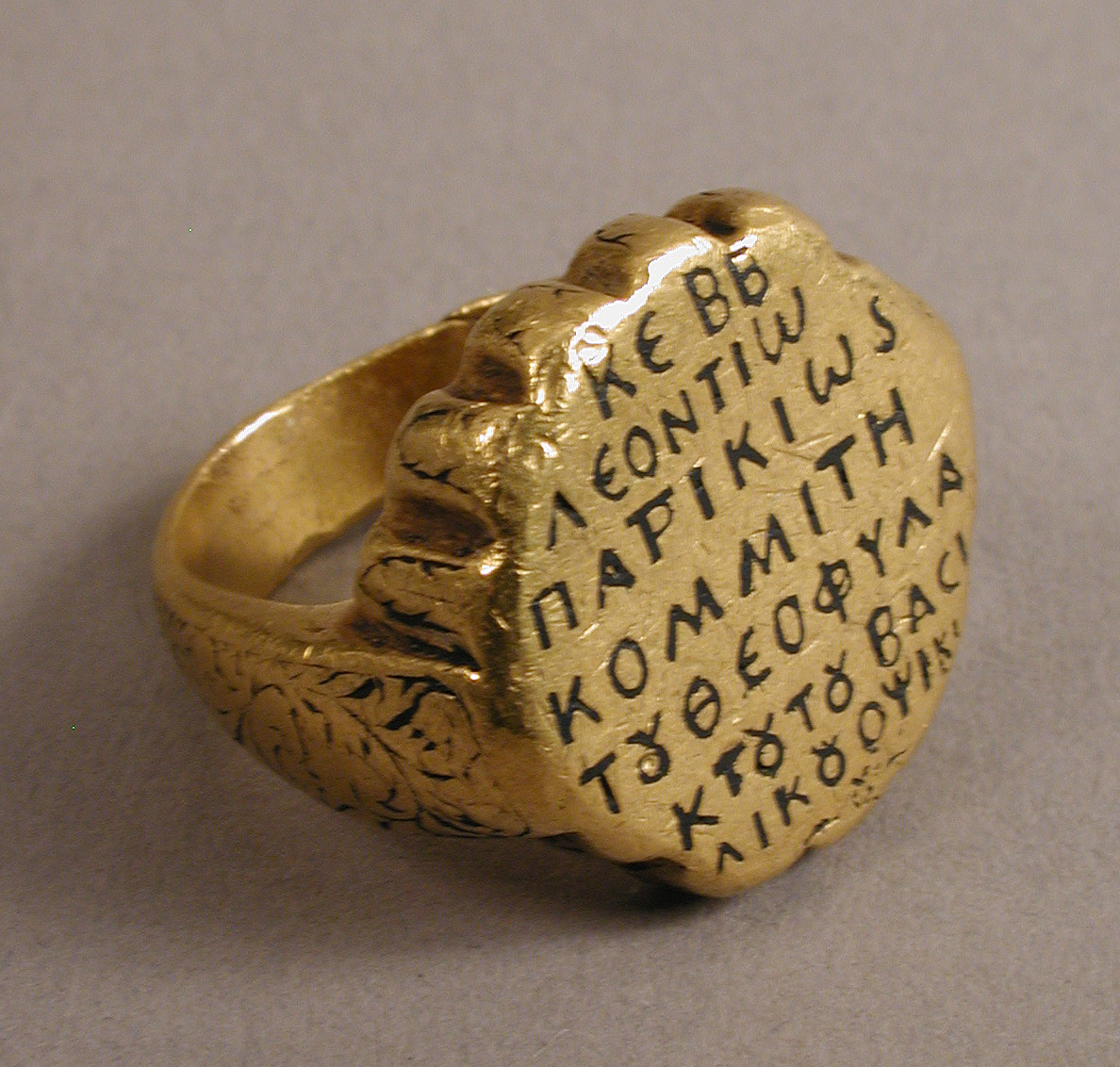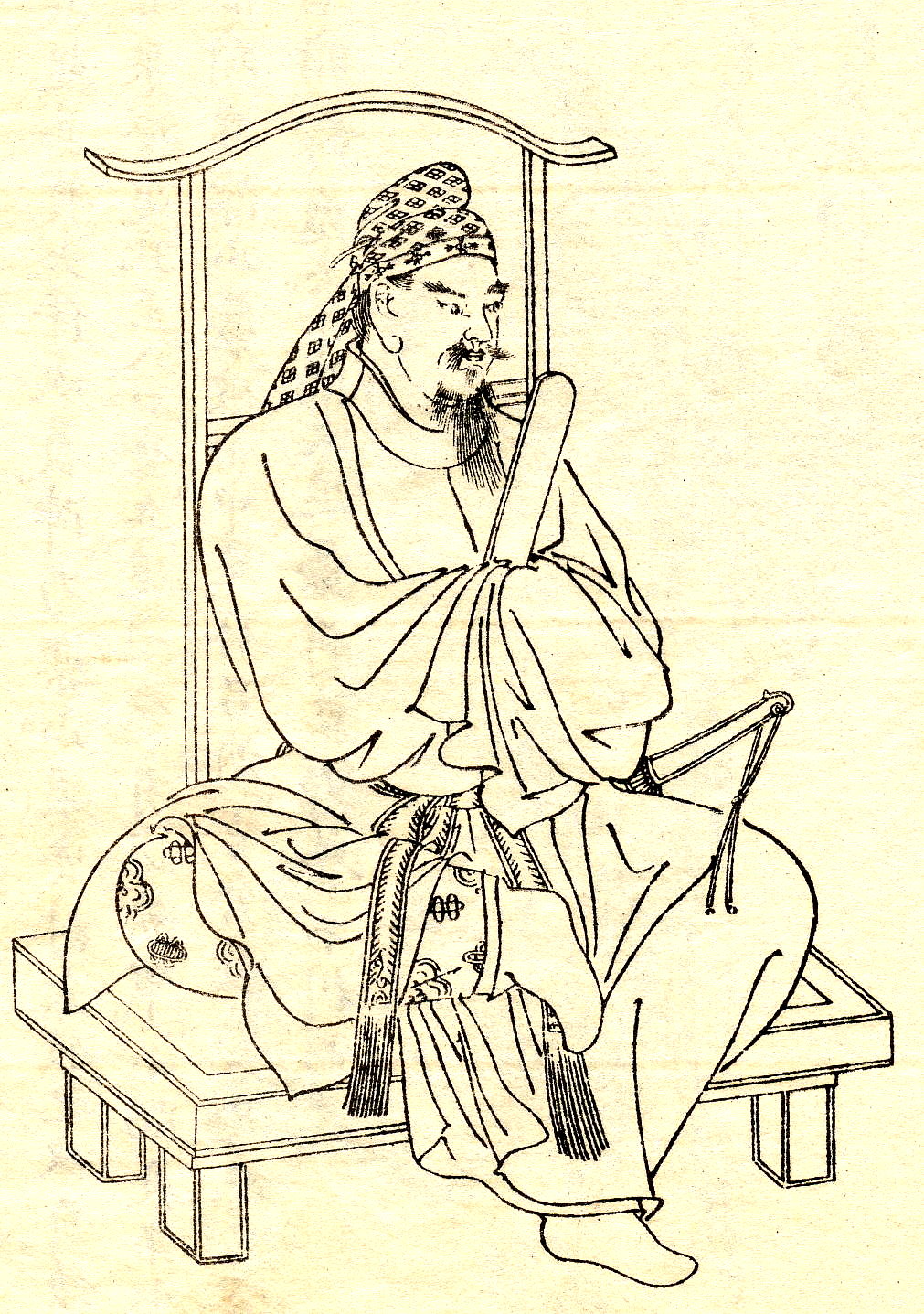|
Mezezius
Mizizios or Mezezius (; or ) was an Armenian noble who served as a general of Byzantium, later usurping the Byzantine throne in Sicily from 668 to 669. Origin and early career According to the Byzantine chroniclers, Mizizios was an Armenian, and "exceedingly handsome and beautiful". According to Cyril Toumanoff, he descended from the princely Gnuni family. In a letter supposedly written by Pope Gregory II to the Emperor Leo III the Isaurian (r. 717–741 A.D), he is referred to as '' komes'' of the Opsikion ()—at that time not yet a province, but rather the emperor's personal military retinue and field army. The 12th-century Syriac chronicle of Michael the Syrian, and the so-called '' Chronicle of 1234'', also accord him the rank of ''patrikios''. Usurpation and death Mizizios accompanied Emperor Constans II (r. 641–668 A.D) in his Italian and Sicilian expedition. When Constans was murdered in Syracuse, Sicily, in 668 A.D, Mizizios was proclaimed emperor against his ... [...More Info...] [...Related Items...] OR: [Wikipedia] [Google] [Baidu] |
Opsikion
The Opsician Theme (, ''thema Opsikiou'') or simply Opsikion (Greek: , from ) was a Byzantine theme (a military-civilian province) located in northwestern Asia Minor (modern Turkey). Created from the imperial retinue army, the ''Opsikion'' was the largest and most prestigious of the early themes, being located closest to Constantinople. Involved in several revolts in the 8th century, it was split in three after ca. 750, and lost its former pre-eminence. It survived as a middle-tier theme until after the Fourth Crusade. History The Opsician theme was one of the first four themes, and has its origin in the praesential armies of the East Roman army. The term ''Opsikion'' derives from the Latin term ''Obsequium'' ("retinue"), which by the early 7th century came to refer to the units escorting the emperor on campaign. It is possible that at an early stage, the ''Opsikion'' was garrisoned inside Constantinople itself. In the 640s, however, following the disastrous defeats suffered dur ... [...More Info...] [...Related Items...] OR: [Wikipedia] [Google] [Baidu] |
Sicily
Sicily (Italian language, Italian and ), officially the Sicilian Region (), is an island in the central Mediterranean Sea, south of the Italian Peninsula in continental Europe and is one of the 20 regions of Italy, regions of Italy. With 4.7 million inhabitants, including 1.2 million in and around the capital city of Palermo, it is both the largest and most populous island in the Mediterranean Sea. Sicily is named after the Sicels, who inhabited the eastern part of the island during the Iron Age. Sicily has a rich and unique culture in #Art and architecture, arts, Music of Sicily, music, #Literature, literature, Sicilian cuisine, cuisine, and Sicilian Baroque, architecture. Its most prominent landmark is Mount Etna, the tallest active volcano in Europe, and one of the most active in the world, currently high. The island has a typical Mediterranean climate. It is separated from Calabria by the Strait of Messina. It is one of the five Regions of Italy#Autonomous regions with s ... [...More Info...] [...Related Items...] OR: [Wikipedia] [Google] [Baidu] |
Constans II
Constans II (; 7 November 630 – 15 July 668), also called "the Bearded" (), was the Byzantine emperor from 641 to 668. Constans was the last attested emperor to serve as Roman consul, consul, in 642, although the office continued to exist until the reign of Leo VI the Wise (r. 886–912). His religious policy saw him steering a middle line in disputes between the Orthodox and Monothelitism, Monothelites by refusing to persecute either and prohibited discussion of the natures of Jesus Christ under the Type of Constans in 648. His reign coincided with Arab invasions under Umar, Uthman, and Mu'awiya I in the late 640s to 660s. Constans was the first emperor to visit Rome since the fall of the Western Roman Empire in 476, and the last one to visit Rome while the Empire still held it. Origins and early career Constans was born on 7 November 630 in Constantinople, the Byzantine capital, to Gregoria and Constantine III (Byzantine emperor), Constantine III. Constantine was a son of Emp ... [...More Info...] [...Related Items...] OR: [Wikipedia] [Google] [Baidu] |
Constantine IV
Constantine IV (); 650 – 10 July 685), called the Younger () and often incorrectly the Bearded () out of confusion with Constans II, his father, was Byzantine emperor from 668 to 685. His reign saw the first serious check to nearly 50 years of uninterrupted Early Muslim conquests, Arab expansion, most notably his Siege of Constantinople (674–678), successful defence of Constantinople, and the temporary stabilization of the Byzantine Empire after decades of war, defeats, and civil strife. His calling of the Sixth Ecumenical Council saw the end of the monothelitism controversy in the Byzantine Empire; for this, he is venerated as a saint in the Eastern Orthodox Church, with his feast day on September 3 (Eastern Orthodox liturgics), September 3.September 3/September 16 Orthodox Calendar (PRAVOSLAVIE.RU). E ...
|
669 Deaths
__NOTOC__ Year 669 ( DCLXIX) was a common year starting on Monday of the Julian calendar. The denomination 669 for this year has been used since the early medieval period, when the Anno Domini calendar era became the prevalent method in Europe for naming years. Events By place Byzantine Empire * Spring – Arab forces that have taken Chalcedon, on the Asian shore of the Bosporus, threaten the Byzantine capital Constantinople. The Muslim-Arabs are decimated by famine and disease. Yazid, the Arab commander, retreats to the island of Cyzicus (modern Turkey). Britain * King Ecgberht of Kent loses the overlordship of Surrey to King Wulfhere of Mercia. Ecgberht then grants the old Saxon Shore Fort at Reculver (south-east England) to a priest named Bassa, in order to establish a monastery dedicated to St. Mary (approximate date). Asia * November 14 – Kamatari, Japanese statesman and reformer, receives the surname Fujiwara from Emperor Tenji as a reward for hi ... [...More Info...] [...Related Items...] OR: [Wikipedia] [Google] [Baidu] |
Patrikios
The patricians (from ) were originally a group of ruling class families in ancient Rome. The distinction was highly significant in the Roman Kingdom and the early Republic, but its relevance waned after the Conflict of the Orders (494 BC to 287 BC). By the time of the late Republic and Empire, membership in the patriciate was of only nominal significance. The social structure of ancient Rome revolved around the distinction between the patricians and the plebeians. The status of patricians gave them more political power than the plebeians, but the relationship between the groups eventually caused the Conflict of the Orders. This time period resulted in changing of the social structure of ancient Rome. After the Western Empire fell, the term "patrician" continued as a high honorary title in the Eastern Empire. In many medieval Italian republics, especially in Venice and Genoa, medieval patrician classes were once again formally defined groups of leading families. In the Holy Roman ... [...More Info...] [...Related Items...] OR: [Wikipedia] [Google] [Baidu] |
Heretic
Heresy is any belief or theory that is strongly at variance with established beliefs or customs, particularly the accepted beliefs or religious law of a religious organization. A heretic is a proponent of heresy. Heresy in Christianity, Judaism, and Islam has at times been met with censure ranging from excommunication to the death penalty. Heresy is distinct from apostasy, which is the explicit renunciation of one's religion, principles or cause; and from blasphemy, which is an impious utterance or action concerning God or sacred things. Heresiology is the study of heresy. Etymology Derived from Ancient Greek ''haíresis'' (), the English ''heresy'' originally meant "choice" or "thing chosen". However, it came to mean the "party, or school, of a man's choice", and also referred to that process whereby a young person would examine various philosophies to determine how to live. The word ''heresy'' is usually used within a Christian, Jewish, or Islamic context, and implies sl ... [...More Info...] [...Related Items...] OR: [Wikipedia] [Google] [Baidu] |
Monothelitism
Monothelitism, or monotheletism was a theological doctrine in Christianity that was proposed in the 7th century, but was ultimately rejected by the sixth ecumenical council. It held Christ as having only one will and was thus contrary to dyothelitism, the Christological doctrine accepted by most Christian denominations, which holds Christ as having two wills (divine and human). Historically, ''monothelitism'' was closely related to monoenergism, a theological doctrine that holds Jesus Christ as having only one energy. Both doctrines were at the center of Christological disputes during the 7th century. Monothelitism is from . Theological notions related to the ''oneness'' of Christ's will emerged as a result of some earlier Christological controversies that were related to monophysitism as formulated by Eutyches (d. 456) and miaphysitism as formulated by non-Chalcedonian followers of Cyril of Alexandria (d. 444). Since the notion of Christ's ''one nature'' implied the ''onenes ... [...More Info...] [...Related Items...] OR: [Wikipedia] [Google] [Baidu] |
Constantinople
Constantinople (#Names of Constantinople, see other names) was a historical city located on the Bosporus that served as the capital of the Roman Empire, Roman, Byzantine Empire, Byzantine, Latin Empire, Latin, and Ottoman Empire, Ottoman empires between its consecration in 330 until 1930, when it was renamed to Istanbul. Initially as New Rome, Constantinople was founded in 324 during the reign of Constantine the Great on the site of the existing settlement of Byzantium, and shortly thereafter in 330 became the capital of the Roman Empire. Following the collapse of the Western Roman Empire in the late 5th century, Constantinople remained the capital of the Eastern Roman Empire (also known as the Byzantine Empire; 330–1204 and 1261–1453), the Latin Empire (1204–1261), and the Ottoman Empire (1453–1922). Following the Turkish War of Independence, the Turkish capital then moved to Ankara. Although the city had been known as Istanbul since 1453, it was officially renamed as Is ... [...More Info...] [...Related Items...] OR: [Wikipedia] [Google] [Baidu] |
Liber Pontificalis
The ''Liber Pontificalis'' (Latin for 'pontifical book' or ''Book of the Popes'') is a book of biography, biographies of popes from Saint Peter until the 15th century. The original publication of the ''Liber Pontificalis'' stopped with Pope Adrian II (867–872) or Pope Stephen V (885–891), but it was later supplemented in a different style until Pope Eugene IV (1431–1447) and then Pope Pius II (1458–1464). Although quoted virtually uncritically from the 8th to 18th centuries, the ''Liber Pontificalis'' has undergone intense modern scholarly scrutiny. The work of the French priest Louis Duchesne (who compiled the major scholarly edition), and of others has highlighted some of the underlying redactional motivations of different sections, though such interests are so disparate and varied as to render improbable one populariser's claim that it is an "unofficial instrument of pontifical propaganda." The title ''Liber Pontificalis'' goes back to the 12th century, although it on ... [...More Info...] [...Related Items...] OR: [Wikipedia] [Google] [Baidu] |
Exarchate Of Africa
The Exarchate of Africa was a division of the Byzantine Empire around Carthage that encompassed its possessions on the Western Mediterranean. Ruled by an exarch (viceroy), it was established by the Emperor Maurice in 591 and survived until the Muslim conquest of the Maghreb in the late 7th century. It was, along with the Exarchate of Ravenna, one of two exarchates established following the western reconquests under Emperor Justinian I to administer the territories more effectively. History Background In the Vandalic War of 533, Byzantine forces under Belisarius reconquered the Maghreb along with Corsica and Sardinia and the Balearic Islands. Emperor Justinian I () organized the recovered territories as the Praetorian prefecture of Africa, which included the provinces of Africa Proconsularis, Byzacena, Tripolitania, Numidia, Mauretania Caesariensis and Mauretania Sitifensis, and was centered at Carthage. In the 550s, a Roman expedition succeeded in regaining parts of ... [...More Info...] [...Related Items...] OR: [Wikipedia] [Google] [Baidu] |






